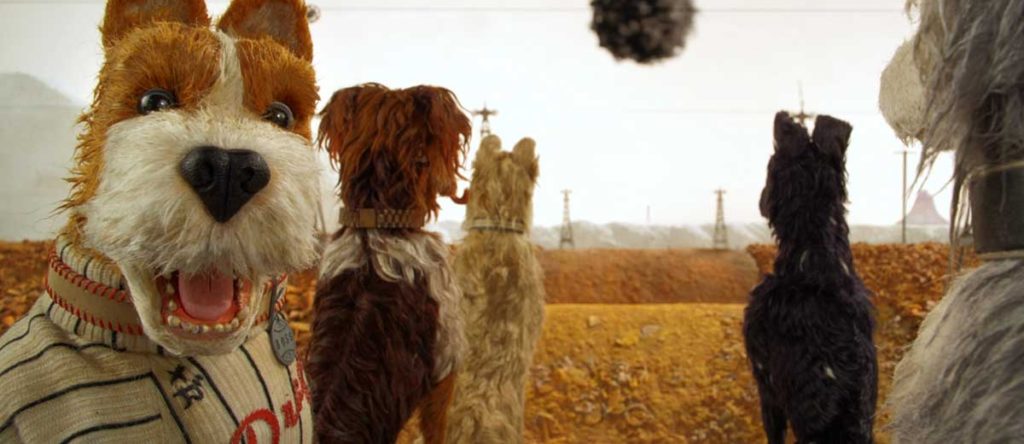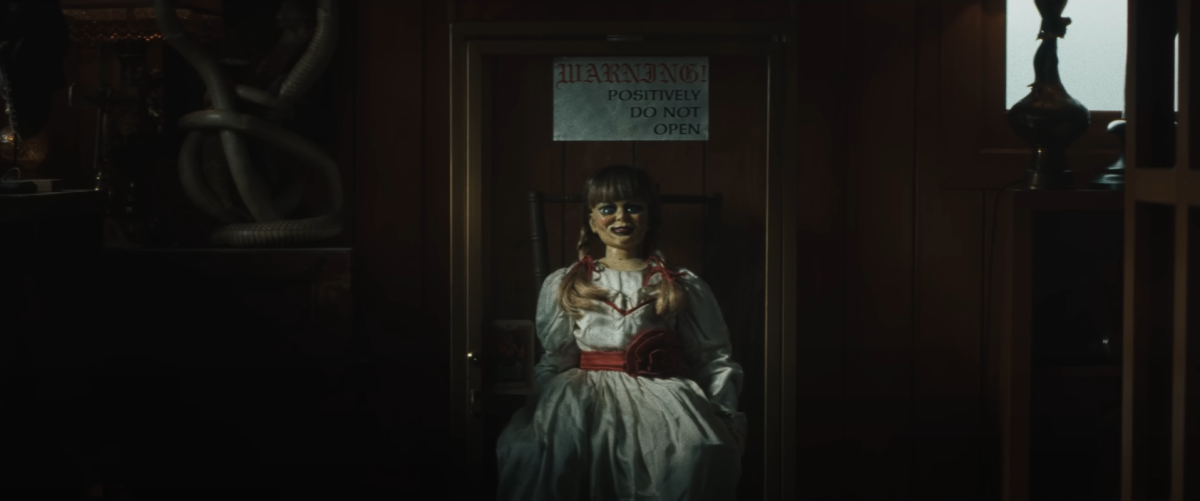Fellowship of the Dog
Explore the wasteland as a young boy attempts to rescue his banished companion.
Apr 5, 2018
What ever happened to man’s bestfriend?
Fox Searchlight Pictures premiered the stop-motion animated film, “Isle Of Dogs,” on Mar. 23, 2018, and it gives audiences the opportunity to explore a boy’s emotional quest to rescue his loving companion.
Directed by Wes Anderson, who is known for his works on “Fantastic Mr. Fox,” the film features the voices of Koyu Rankin as Atari Kobayashi, Bryan Cranston as Chief, Edward Norton as Rex, Bob Balaban as King, Bill Murray as Boss, Jeff Goldblum as Duke, Liev Schreiber as Spots, Scarlett Johansson as Nutmeg, Kunichi Nomura as Mayor Kobayashi, Greta Gerwig as Tracy Walker and Courtney B. Vance as the Narrator.
The story takes place in the fictional Megasaki City in Japan, where the population is exposed to a dog flu virus. In response to the disaster, the thuggish Mayor Kobayashi banishes dogs to an island garbage dump, beginning with Spots, a weaponized guardian and loving companion to Atari, the mayor’s 12-year-old orphaned nephew and ward. In an attempt to search for Spots, Atari journeys on a quest that leads him to a canine wasteland, where mysteriously sick dogs fight over morsels gleaned from rancid, maggoty garbage.
Back in Megasaki City, the mayor order his scientists to work on a cure that will ail the dogs. Meanwhile, foreign-exchange student Tracy Walker attempts to investigate the mayor for his schemes.
Audiences spend a lot of time with Atari, and most of his lines aren’t translated into English. There are some cute interpretations by a translator, voiced by Frances McDormand, but it was evident that Director Anderson did not want subtitles. Thus, when the Japanese characters speak, their words are usually reduced to be decorative, at least for non-Japanese speakers.
Director Anderson is known for creating elaborate counter worlds like ours while remaining uniquely imaginative. The world of “Isle Of Dogs” comprises a reality that appears to be filtered through a sieve and carefully arranged, which results in a story that appears be thrilling and wearying. Taking place in a fictive Japan, the movie’s cat-fancying villains of the future conspire to eradicate dogs, prompting one character to plaintively ask, “Whatever happened to man’s best friend?”
As he did in “Fantastic Mr. Fox,” Anderson tells his tale primarily using stop-motion animation, an artisanal process that creates the illusion of movement frame-by-frame with objects, such as puppets. The movie’s production is a horror show, consisting of an abandoned nuclear power plant and a derelict amusement park. It is also visually seductive, filled with aligned cubistic trash, gleaming pools of toxic liquid and walls of colored glass bottles that glow like stained-glass windows on a sun-drenched morning.
In a world of purebreds and mutts, the lead dogs, Chief, Rex, Boss, Duke and King, are scene-stealers of every breed whose barks are rendered in English. Chief, also known as the head of the alpha male pack, displays his leadership as a proud, violent stray who never depends on humans and their unreliable kindness.
The dogs provide the majority of emotion in the film. They are touching and thoroughly delightful company shown by their witty conversations, quirky expressions and the huge amounts marks of heartbreaking abuse — matted fur, open wounds, painfully knobby legs and the anxious, mournful look of devotion that dogs retain for even the most unworthy humans.
“The dogs have been abandoned by their masters; damningly, only Atari has set off on a rescue mission. Yet most haven’t relinquished their connections to their peopled past. They yearn for a pat on the head.”
-Andy Gent, Head of the Puppet Department
The story of the abused animals of Trash Island shows tales of pain and suffering. Director Anderson, who also wrote the screenplay, handled this theme by disposing of a genocide only to return to his distinct scenes of “Isle of Dogs.” The film is filled with charming visuals and nostalgic details — old-fashioned labels, computer punch cards — that construct the texture of its imaginary world.
Throughout “Isle Of Dogs,” there are apparent references based on popular Japanese directors and actors, including Seijun Suzuki, Toshiro Mifune and Hayao Miyazaki.
Director Anderson’s use of film space is one of his stylistic signatures; he favors symmetry and does significant work inside the frame. His originality and imagination are what makes “Isle of Dogs” watchable for hours on end.
The film successfully received a fresh score of 94% critic rating on Rotten Tomatoes and an 8.4/10 on IMDB, the Internet Movie Database.








